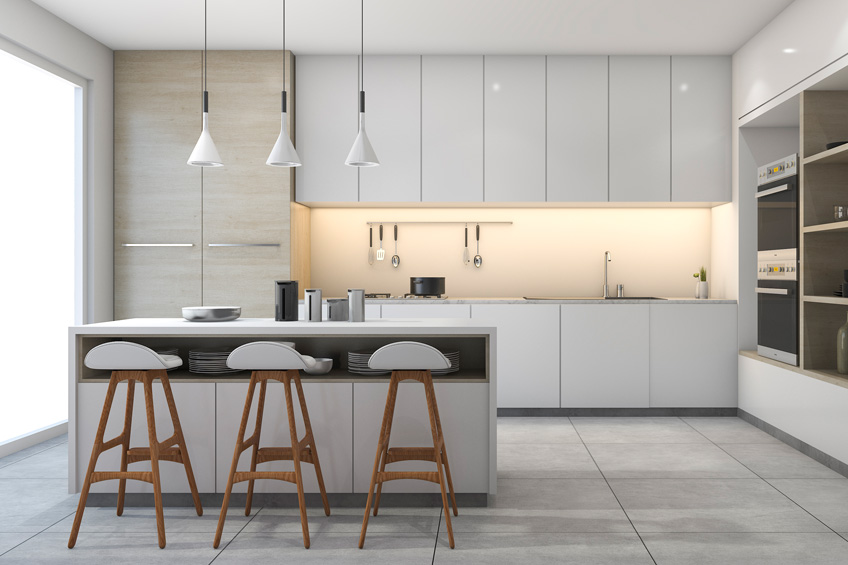Older homes and most builder-grade new construction only offer basic lighting in kitchens. They typically have a ceiling fixture or two and call it good. But today’s kitchens are more than just a place to cook dinner. They’re often an integral part of a home’s living space with open floorplans and eat-in dining. That adds extra importance to making your kitchen lighting a part of your home’s overall décor.
Here are some tips on how to make your kitchen lighting both functional and fashionable:
Ambient Lighting
This is your basic room lighting. It’s what helps you navigate the space comfortably and safely. It’s also the canvas on which you add elements that make your kitchen a welcoming and functional space.
Generally, ambient lighting is provided by overhead fixtures, either surface mounted or recessed—or a combination of both, depending on your decorating scheme.
In a galley or other single-aisle layout, these lights should be placed along the midline of the traffic pattern. They should be spaced to give even lighting with no dark or overly bright spots.
If you get natural light during the daytime you may not need much supplemental lighting before sunset but having dimmers on your ambient lights will add extra flexibility to controlling your kitchen lighting at different times of the day and year.
Task Lighting
Task lighting keeps your kitchen both functional and safe. Ambient lighting illuminates the overall room but since it’s overhead, it can cast shadows on work surfaces making it hard to see what you’re cutting, chopping, and mixing. That’s not only annoying but creates a safety hazard when working with dangerous objects like knives and mixers. You don’t want to mistake your finger for a carrot.
The most common type of task lighting is an over-sink fixture, and while that makes dishwashing easier, it doesn’t do much illuminate work areas. Solve that problem with under-cabinet lights. They can be mounted in the center of the base of a wall cabinet or hidden behind the front lip of the cabinet bottom.
Types and designs vary considerably, from standard fluorescent tubes to LED strips and hard-wired to battery operated. Some are dimmable and some are not. You may even be able to get remote controls.
If you aren’t sure what will work best for you, contact a licensed electrician or a lighting designer. Better safe than sorry.
Decorative Lighting
Function can be fashionable too, and with so many kitchens part of an open floor plan, choosing the right fixtures and controls can add beauty and functionality to your living space. Dimmers are an easy way to balance kitchen and dining lighting to set the mood you want for entertaining guests or a comfortable family dinner.
Pendants can add style to a kitchen island or dining table, and wall sconces can add a dramatic touch in shared kitchen and dining areas.
Bring Your Kitchen Out of the Shadows
Regardless of the kitchen lighting design you choose, careful choices will add both your cooking and time you spend enjoying it.
Remodeling, renovations, and additions need top-notch electrical work, and Allstar Electrical Services delivers the quality results you expect and deserve. We work hand-in-hand with you and your contractors to ensure your new project is done right, on budget and on schedule.
Whatever your electrical needs, call Allstar Electrical at (303) 399-7420 or visit our website. Then use our handy on-line forms to request an estimate or set up an appointment. We’ve served the Front Range for over 15 years and are top-rated by the BBB.


